| Project Name | Project Ranking Level | Description and Scoring Value | Bonus Scoring Value | Example |
|---|
| Sira - Single Line | 6 | Three cards in direct sequence all of the same suit. | In a bid of Sun = 4
In a bid of Hokum = 2 | 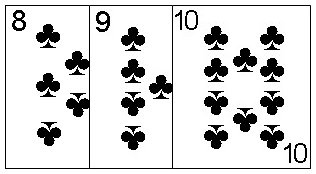 |
| 50 | 5 | Four cards in sequence all of the same suit. | In a bid of Sun = 10
In a bid of Hokum = 5 | 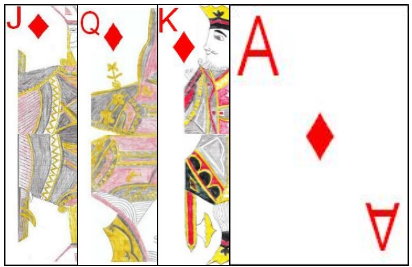 |
| 100 (Four of a Kind) | 4 | Four 10s, Jacks, Kings, Queens or Kings. | In a bid of Sun = 20
In a bid of Hokum = 10 | 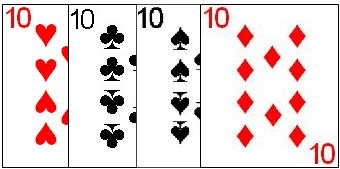 |
| 100 (Aces) | 3 | Four Aces in a bid of Hokum | In a bid of Hokum = 10 | 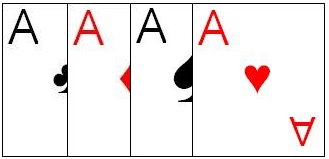 |
| 100 (Serial) | 2 | Five cards in sequence, all of the same suit. | In a bid of Sun = 20
In a bid of Hokum = 10 | 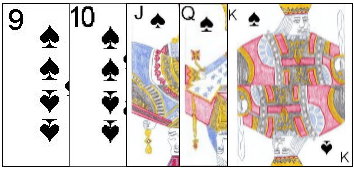 |
| 400 | 1 | Four Aces in a bid of Sun | In a bid of Sun = 40 | 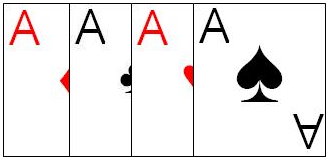 |
Copyright © 2015 CatsAtCards.com. All rights reserved.
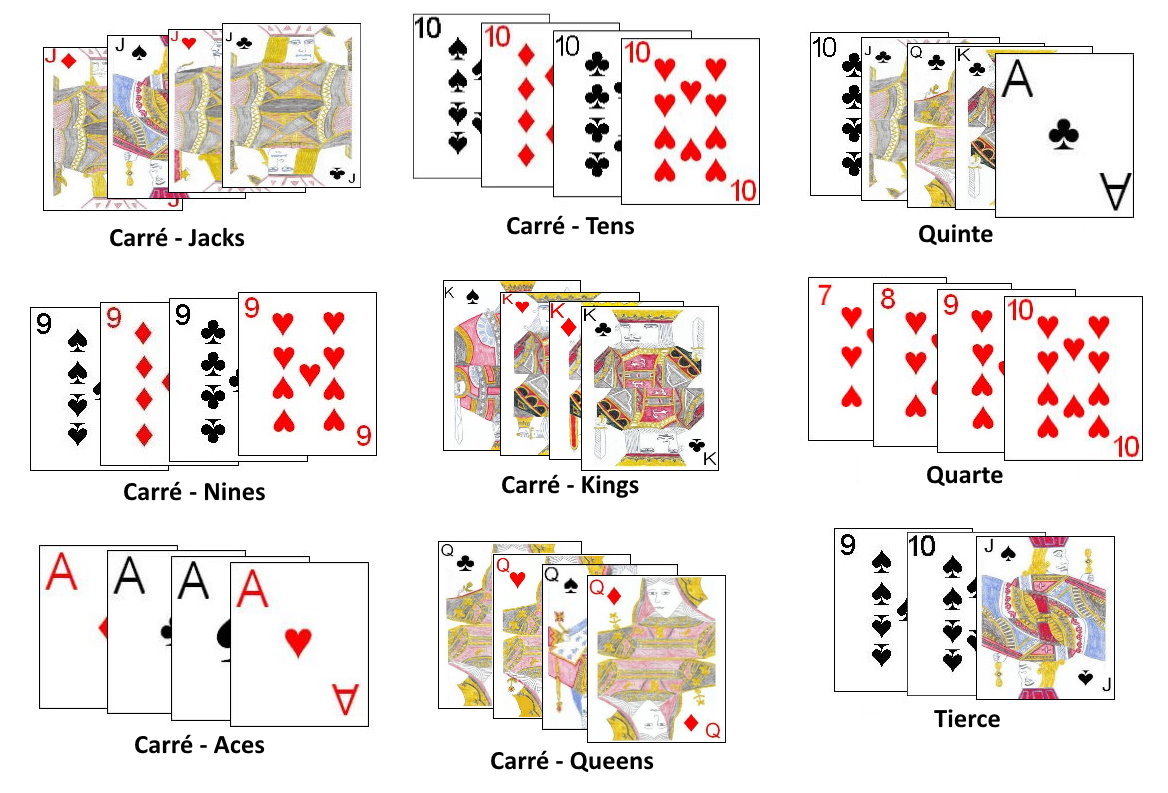
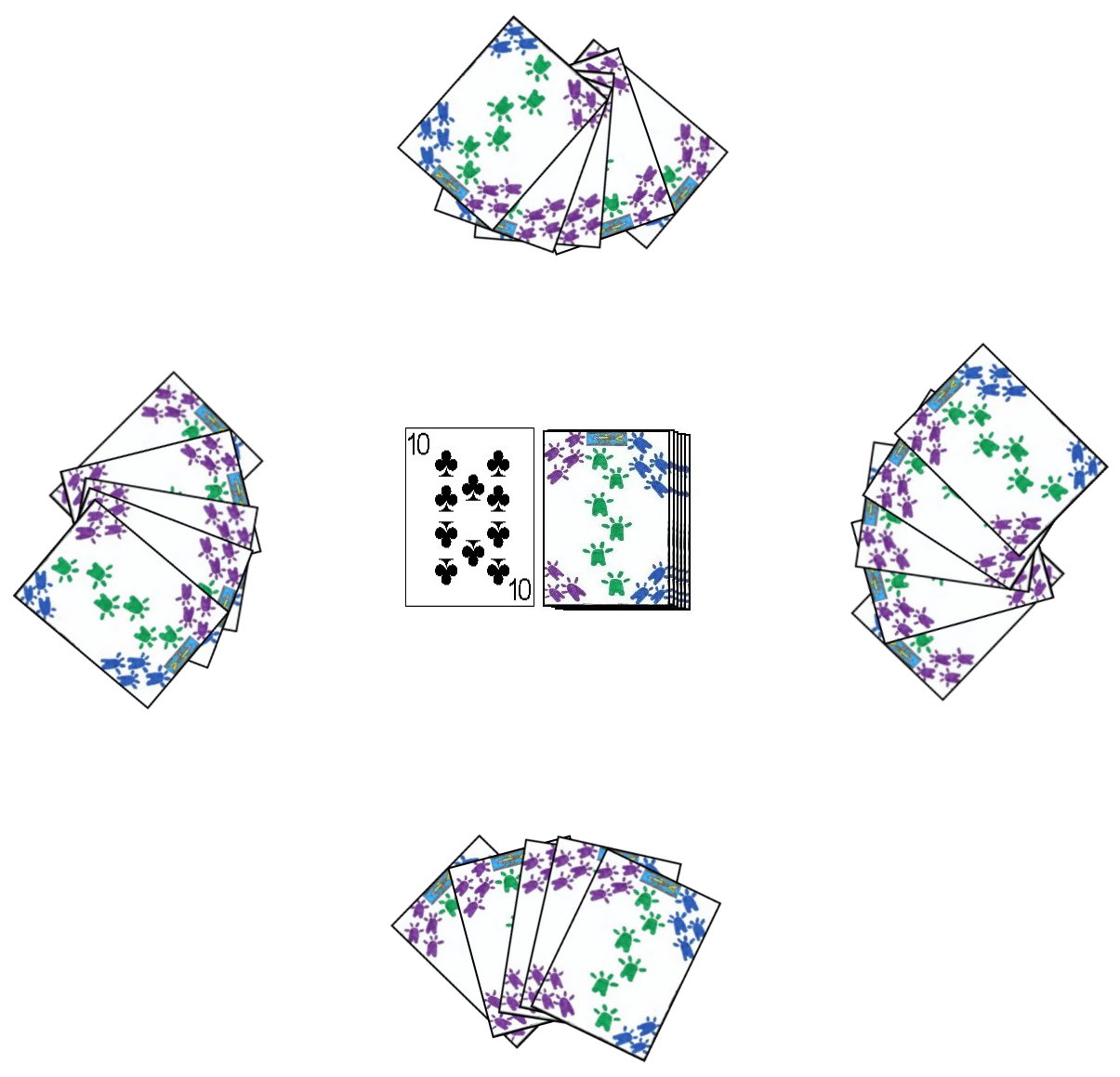 Before start of play, the partnerships should be determined (if this has not already been decided). A common way to perform this task is for each of the four players to draw a card from the shuffled, face-down deck. The players drawing the two highest cards would play as partners against the players drawing the two lowest cards. Each player should be seated directly across from his partner and will thus be flanked by an opponent at each side. The player who drew the lowest card of all in this draw would also be set as the first dealer. After each hand the role of dealer rotates around the table in a counter-clockwise direction.
Before start of play, the partnerships should be determined (if this has not already been decided). A common way to perform this task is for each of the four players to draw a card from the shuffled, face-down deck. The players drawing the two highest cards would play as partners against the players drawing the two lowest cards. Each player should be seated directly across from his partner and will thus be flanked by an opponent at each side. The player who drew the lowest card of all in this draw would also be set as the first dealer. After each hand the role of dealer rotates around the table in a counter-clockwise direction.
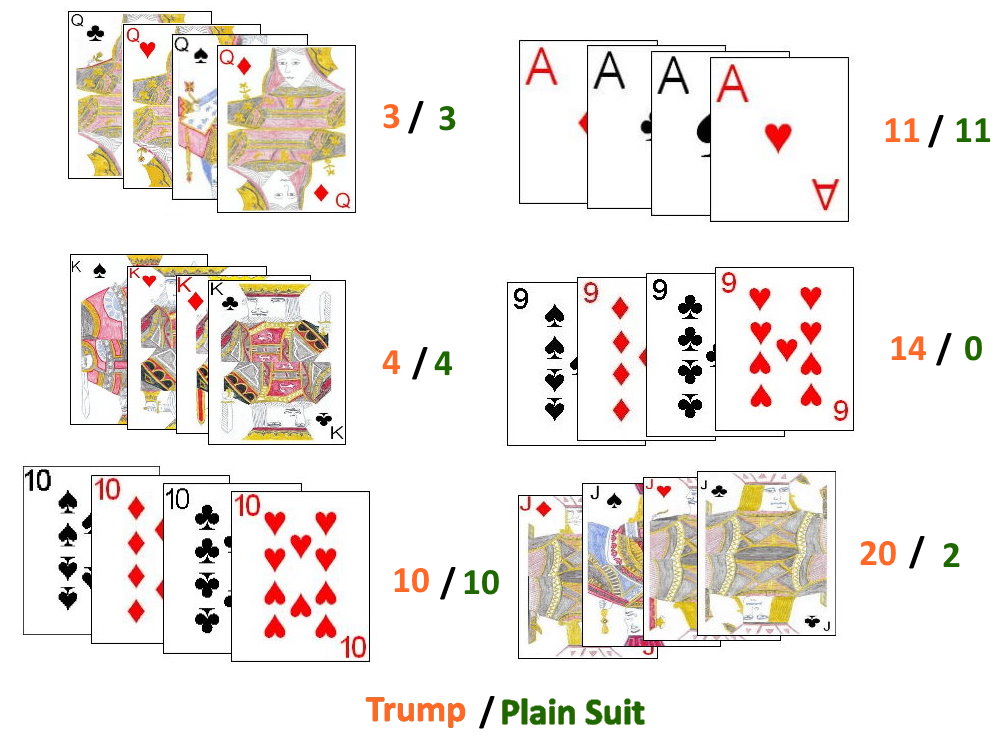
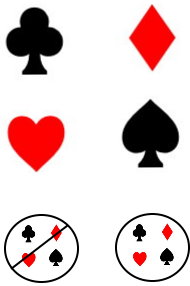 Starting with the player to the dealer's immediate right, each player may state a legal bid or Pass. The following are all the legal bids, shown from lowest to highest.
Starting with the player to the dealer's immediate right, each player may state a legal bid or Pass. The following are all the legal bids, shown from lowest to highest.
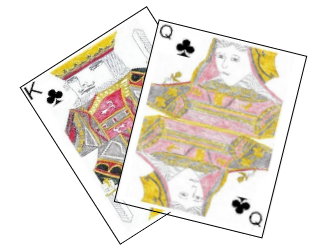 Declarations are not announced or scored in La coinche but a Belote can still be announced and scored by a player if he has both the King and Queen of the declared trump suit for the hand. As in the other variations of Belote, the last trick earns 10 points for the team who wins it.
Play of the hand is identical to that in Bidding Belote, with the same requirements as regarding when a player must trump or attempt to win the trick.
Declarations are not announced or scored in La coinche but a Belote can still be announced and scored by a player if he has both the King and Queen of the declared trump suit for the hand. As in the other variations of Belote, the last trick earns 10 points for the team who wins it.
Play of the hand is identical to that in Bidding Belote, with the same requirements as regarding when a player must trump or attempt to win the trick.
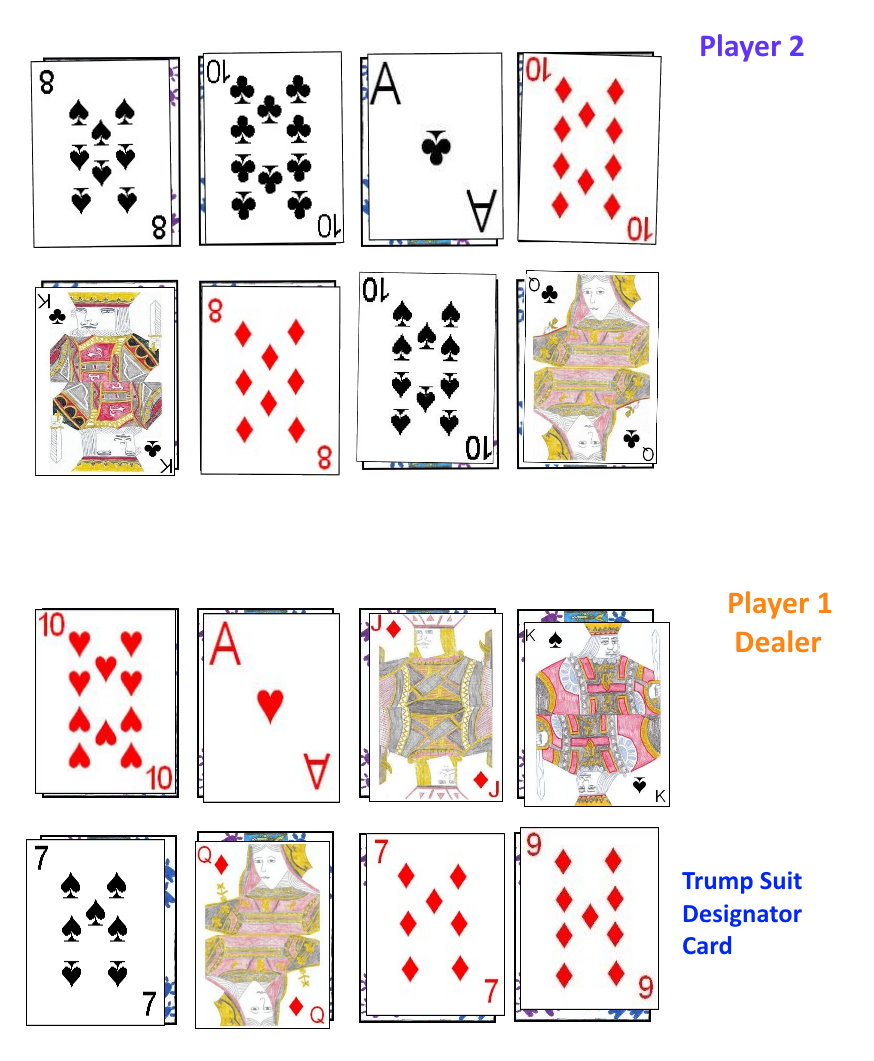 Belote Découverte: Belote Découverte (translated to "Belote with exposed cards") is a variation of Belote which is designed to be played by two players.
This variant is also sometimes known as Belote Marseilles.
Belote Découverte: Belote Découverte (translated to "Belote with exposed cards") is a variation of Belote which is designed to be played by two players.
This variant is also sometimes known as Belote Marseilles.






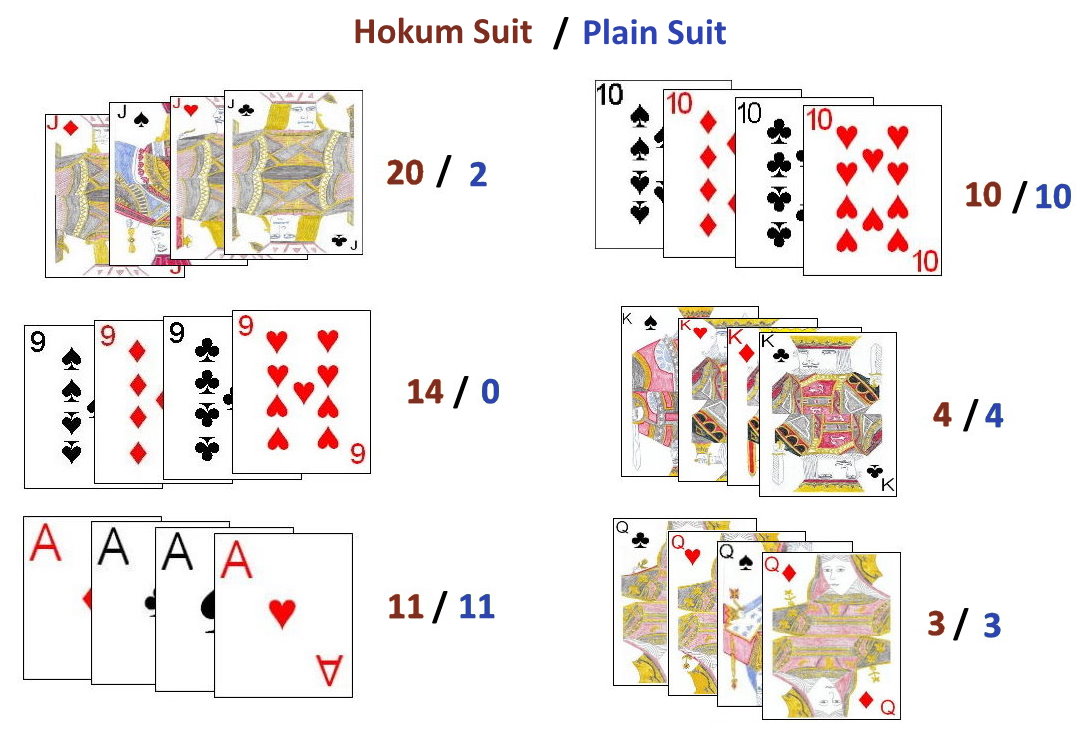
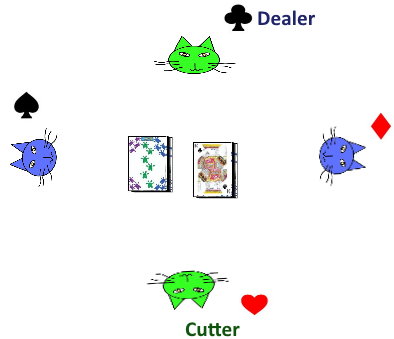 Determination of partnerships is performed in the same method as the other forms of Belote, however, determination of the first dealer for the first game, is done in a unique fashion, as follows. After the partnerships are determined, the players should each sit at the table directly across from his partner. Any player then shuffles the deck and passes it to the player at his immediate left to cut the deck. Each player at the table is then assigned a specific suit in the deck. Starting with the player who cuts the deck, exposing the top card from the bottom packet in the cut. The player who performs this cut is assigned the suit of Hearts, each additional player at the table in a counter-clockwise direction is assigned a specific suit in the same way, continuing with Diamonds, Clubs, then Spades. The player corresponding to the suit exposed in the cut card is set as the first dealer for game. Thereafter, the role of dealer rotates around the table in a counter-clockwise direction after each hand. The cards are never shuffled amongst hands during the same game, but are simply all gathered together and cut by the next dealer.
Determination of partnerships is performed in the same method as the other forms of Belote, however, determination of the first dealer for the first game, is done in a unique fashion, as follows. After the partnerships are determined, the players should each sit at the table directly across from his partner. Any player then shuffles the deck and passes it to the player at his immediate left to cut the deck. Each player at the table is then assigned a specific suit in the deck. Starting with the player who cuts the deck, exposing the top card from the bottom packet in the cut. The player who performs this cut is assigned the suit of Hearts, each additional player at the table in a counter-clockwise direction is assigned a specific suit in the same way, continuing with Diamonds, Clubs, then Spades. The player corresponding to the suit exposed in the cut card is set as the first dealer for game. Thereafter, the role of dealer rotates around the table in a counter-clockwise direction after each hand. The cards are never shuffled amongst hands during the same game, but are simply all gathered together and cut by the next dealer.
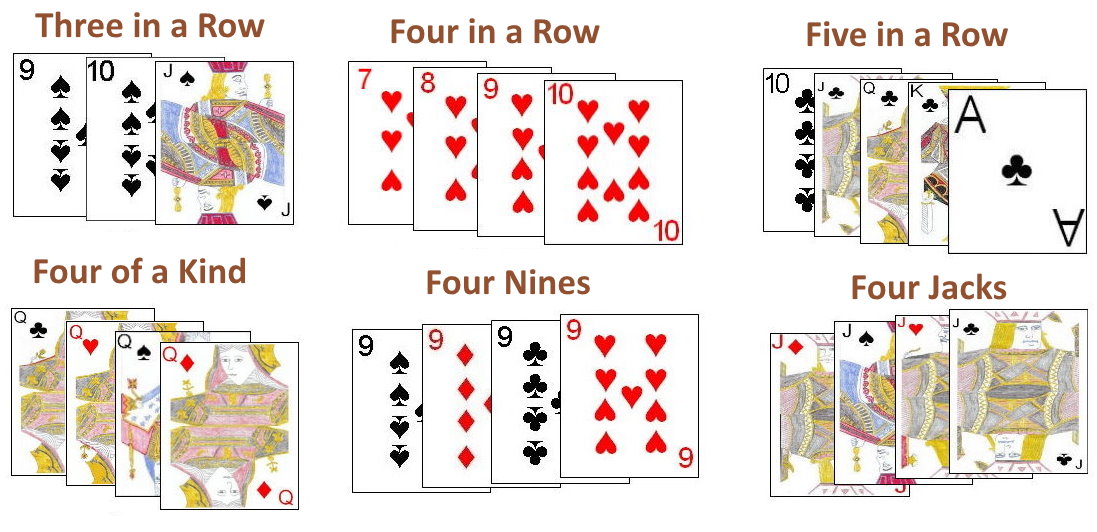
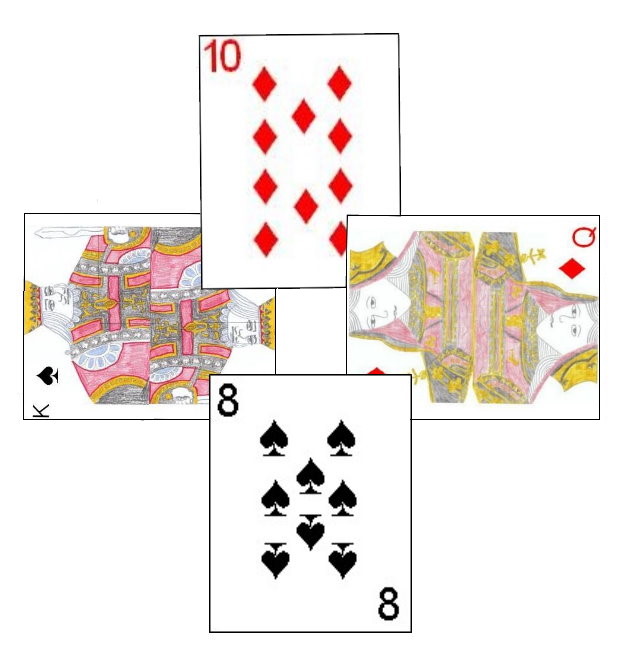 After the trump suit has been determined, the players then pick up the
remaining three face-down cards which were initially dealt to their hand (the kitty). The play then begins with the player to the immediate left of the current dealer.
After the trump suit has been determined, the players then pick up the
remaining three face-down cards which were initially dealt to their hand (the kitty). The play then begins with the player to the immediate left of the current dealer.
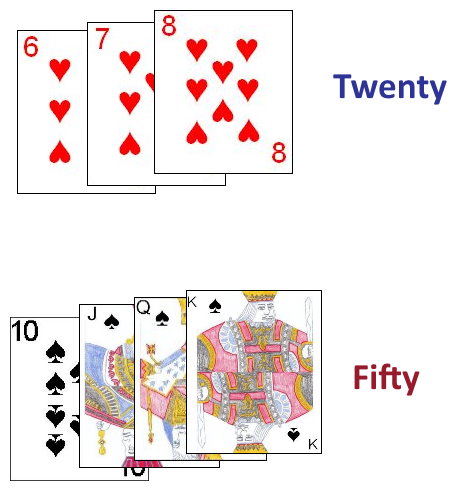
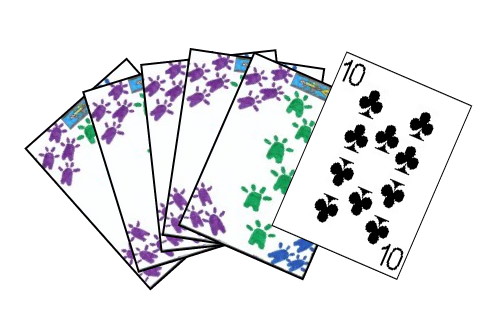 The cards are then all gathered by the first dealer who then thoroughly shuffles the deck and passes the cards to the opponent at his immediate right to cut. After the cut, the dealer then begins dealing the cards one-by-one and face down around the table, starting with the player at his immediate left. He continues dealing in a clockwise direction around the table until player, including himself, has a total of 6 cards. The dealer's last dealt card is dealt face-up in front of the dealer, with that suit of that card designating the trump suit for the hand.
The cards are then all gathered by the first dealer who then thoroughly shuffles the deck and passes the cards to the opponent at his immediate right to cut. After the cut, the dealer then begins dealing the cards one-by-one and face down around the table, starting with the player at his immediate left. He continues dealing in a clockwise direction around the table until player, including himself, has a total of 6 cards. The dealer's last dealt card is dealt face-up in front of the dealer, with that suit of that card designating the trump suit for the hand.
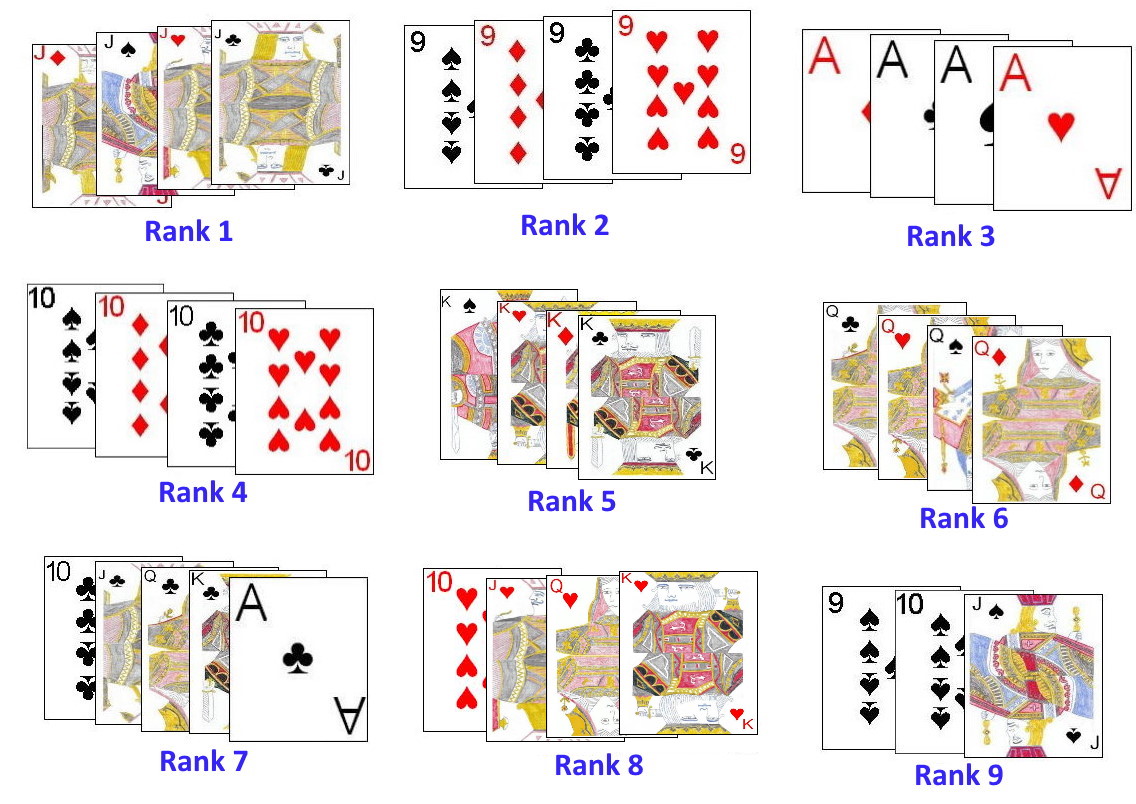
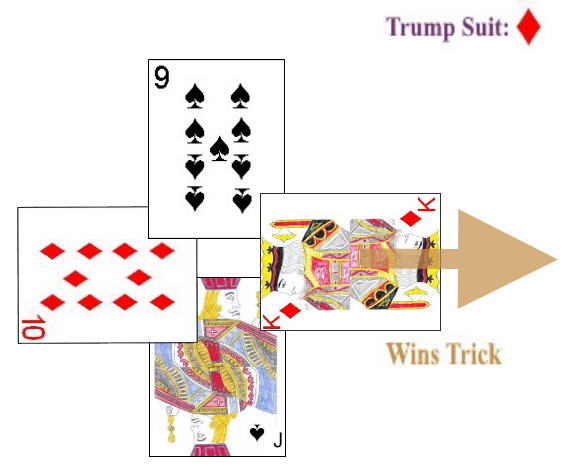 In addition to the melds listed above, there is another special meld which any player may score for during the hand, called Bell. This meld consists of having both the King and Queen of the trump suit designated for the hand. This meld is declared by a player upon playing the second card which would normally form the Bell, and entitles that player's partnership to score 20 points. This meld can be scored regardless of which team earned the right to score for the other melds, and the Bell may include cards which were used in other melds, such as a Sequence.
In addition to the melds listed above, there is another special meld which any player may score for during the hand, called Bell. This meld consists of having both the King and Queen of the trump suit designated for the hand. This meld is declared by a player upon playing the second card which would normally form the Bell, and entitles that player's partnership to score 20 points. This meld can be scored regardless of which team earned the right to score for the other melds, and the Bell may include cards which were used in other melds, such as a Sequence.
 If, after all scores during the hand are calculated, the Contracting side managed to earn more total "card points" during the hand, both partnerships score a number of game points for that hand equal to the total number of "card points" earned during that hand. However, if the Contracting team scores equal to or less than the opponent (called being "set" or "hicked"), the Contracting team score nothing for the hand (which is marked as XX on the score sheet and called Turkey Tracks), while the opposing team earns a number of game points for the hand equal to the total "card points" they managed to earn during the hand for captured scoring cards, last trick, melds and Bell.
If, after all scores during the hand are calculated, the Contracting side managed to earn more total "card points" during the hand, both partnerships score a number of game points for that hand equal to the total number of "card points" earned during that hand. However, if the Contracting team scores equal to or less than the opponent (called being "set" or "hicked"), the Contracting team score nothing for the hand (which is marked as XX on the score sheet and called Turkey Tracks), while the opposing team earns a number of game points for the hand equal to the total "card points" they managed to earn during the hand for captured scoring cards, last trick, melds and Bell.